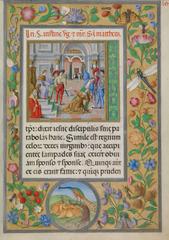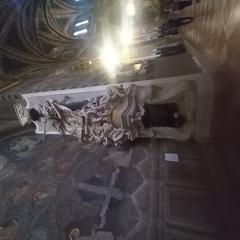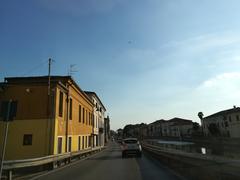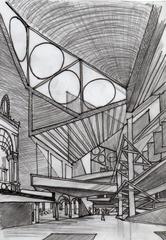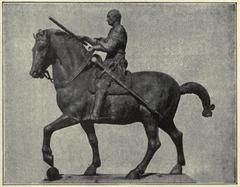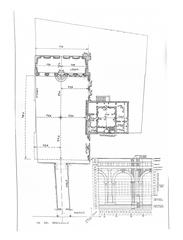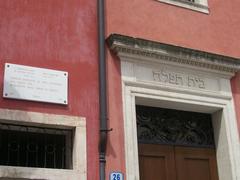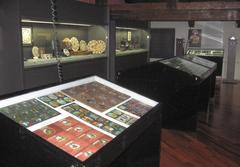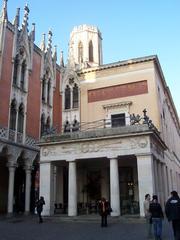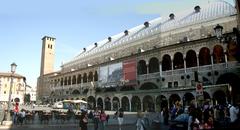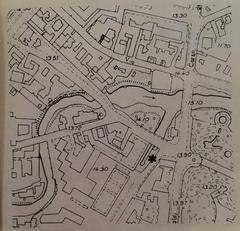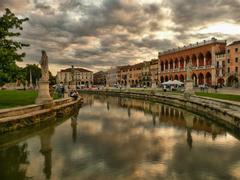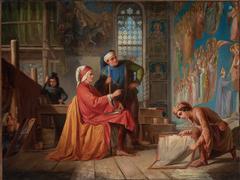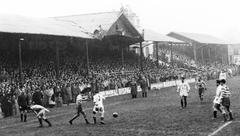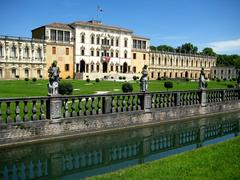Padua Baptistery Visiting Hours, Tickets, and Historical Guide
Date: 04/07/2025
Introduction to the Padua Baptistery
The Padua Baptistery, or Battistero di San Giovanni Battista, is one of northern Italy’s most remarkable medieval monuments. Adjacent to the Cathedral of Santa Maria Assunta in Padua’s historic center, this 12th-century octagonal structure offers visitors a profound encounter with religious history, artistic mastery, and civic heritage. Its modest Romanesque exterior conceals an interior of breathtaking beauty: the walls and dome are entirely covered with a monumental fresco cycle by Giusto de’ Menabuoi (1375–1378), which vividly portrays the Christian narrative from Genesis to the Apocalypse.
Commissioned by the influential Da Carrara family and recognized as a UNESCO World Heritage site under “Padua Urbs Picta,” the Baptistery stands as a testament to Padua’s intertwined religious, civic, and artistic identity. Today, visitors can explore this historic gem through guided tours, multimedia apps like Audiala, and a range of visitor-friendly services. This detailed guide provides essential information on visiting hours, ticketing, accessibility, nearby attractions, and practical travel tips to help you make the most of your visit (Finestre sull’Arte, Turismo Padova, Padua Urbs Picta UNESCO).
Table of Contents
- Introduction
- Historical Overview
- Visiting Information
- Frequently Asked Questions (FAQ)
- Conclusion & Call to Action
- References
Historical Overview
Origins and Development
The Padua Baptistery was constructed in the 12th century near the city’s cathedral, incorporating earlier religious structures dating back to the 4th or 5th century. Initially built in Romanesque style, the building underwent significant modifications in the 14th century under the patronage of the Da Carrara family, especially during the rule of Prince Francesco il Vecchio da Carrara. The addition of a polygonal apse and enhancements to the dome increased the structure’s vertical emphasis while maintaining its original octagonal form—symbolizing renewal and eternity.
Artistic Significance: Giusto de’ Menabuoi
The interior is dominated by the extraordinary fresco cycle by Giusto de’ Menabuoi, commissioned by Fina Buzzaccarini between 1375 and 1378. These frescoes represent one of the most complete and best-preserved examples of late medieval religious art in northern Italy. The dome’s radiant Christ Pantocrator, surrounded by concentric circles of angels and saints, offers a powerful vision of Paradise. The walls narrate biblical stories from Genesis through the New Testament and the Apocalypse, culminating in the Coronation of the Virgin in the apse—a symbol of hope and salvation (Finestre sull’Arte).
Giusto’s frescoes synthesize Byzantine iconography and the emerging naturalism of the Italian Trecento, drawing inspiration from Giotto’s nearby Scrovegni Chapel yet maintaining a mystical, hieratic quality. This “visual Bible” was designed to instruct the faithful in Christian doctrine, using vivid color, expressive gestures, and clear narrative sequences.
Liturgical and Civic Role
Historically, the Baptistery was the exclusive site for baptism in Padua, embodying the spiritual transformation associated with Christian initiation. Its octagonal architecture, central marble font, and proximity to the cathedral underscore its liturgical importance. Major baptisms, especially those of prominent citizens, were significant public events that reinforced communal identity and the city’s Christian character. The frescoes and architectural splendor also served to assert the Carraresi family’s piety and cultural leadership (Abano.it).
UNESCO Recognition
In 2021, the Padua Baptistery was included in the UNESCO World Heritage List as part of “Padua’s fourteenth-century fresco cycles.” This prestigious recognition highlights its significance as a pinnacle of medieval art and architecture and ensures ongoing conservation efforts (Padua Urbs Picta UNESCO).
Visiting Information
Opening Hours
- Monday: 2:00 p.m. – 5:30 p.m. (entries every 30 minutes)
- Tuesday–Sunday & Holidays: 10:30 a.m. – 5:30 p.m. (entries every 30 minutes)
- Closed during certain major holidays. Last entry is 30 minutes before closing.
- Always verify current hours on the official website before your visit (Turismo Padova).
Tickets and Admission
- Standard admission: €8 (~$8.60 USD)
- Reduced admission: €2–3 (students, seniors, eligible groups)
- Free entry: Children under 18, Padua residents
- Combined tickets may include entry to the Cathedral, Bishop’s Palace, and Diocesan Museum
- Tickets can be reserved online (recommended, especially for weekends and holidays) or purchased at the ticket office at Piazza Duomo 12. Many platforms offer free cancellation up to 24 hours before the visit (Travel Buddies, Renato Prosciutto).
Accessibility
The Baptistery is fully wheelchair accessible, with ramps and smooth pathways. On-site staff are available to assist visitors with special needs. It is advisable to contact staff ahead for specific requirements (Travel Buddies).
Tours and Multimedia Guides
- Audio guides in Italian, English, French, Spanish, and German are included in the ticket price.
- Guided tours can be arranged for groups and educational visits.
- The Audiala app offers enhanced multimedia content for a deeper appreciation of the art and history.
- Special events and temporary exhibitions are occasionally held—check ahead for current programming (Veronika’s Adventure).
Travel Tips & Nearby Attractions
- Location: Piazza Duomo, 14, in the heart of Padua’s historic center.
- Nearby attractions include the Cathedral of Santa Maria Assunta, Bishop’s Palace, Scrovegni Chapel, Prato della Valle, and Piazza dei Signori.
- The area is pedestrian-friendly and accessible via public transport; parking nearby is limited, so plan ahead.
- Allow 1 to 1.5 hours for a thorough visit.
- Dress modestly and wear comfortable shoes.
- Photography is permitted (without flash); safety straps may be required.
Frequently Asked Questions (FAQ)
What are the Padua Baptistery opening hours?
Monday 2:00 p.m. – 5:30 p.m.; Tuesday–Sunday and holidays 10:30 a.m. – 5:30 p.m., entries every 30 minutes.
How do I buy Padua Baptistery tickets?
Purchase online in advance or at the ticket office at Piazza Duomo 12. Many vendors offer free cancellation.
Is the Baptistery wheelchair accessible?
Yes, with ramps and smooth surfaces. Staff assistance is available.
Are audio guides available?
Yes, in multiple languages and included in the ticket price.
Can I take photos?
Photography is allowed with safety precautions; flash is usually prohibited.
Can I visit the Baptistery with children?
Yes, children are welcome and can enjoy engaging audio content.
What else can I see nearby?
The Cathedral, Bishop’s Palace, Diocesan Museum, and Scrovegni Chapel are all within easy walking distance.
Conclusion & Call to Action
The Padua Baptistery is a masterpiece of medieval art and architecture, offering a vivid journey through centuries of faith, artistry, and civic tradition. Its breathtaking frescoes by Giusto de’ Menabuoi, historical significance, and welcoming visitor services make it a must-see among Padua historical sites. Plan your visit by booking tickets in advance, utilizing the Audiala app for immersive tours, and exploring the surrounding cultural treasures of Padua’s historic center.
For more information, guided tour bookings, and updates on special events, visit the official Padua tourism website or the Baptistery’s booking page.
Start your journey today and immerse yourself in the timeless legacy of the Padua Baptistery!
References and Further Reading
- Finestre sull’Arte: The Spectacle of the Baptistery of Padua – The Frescoes of Giusto de’ Menabuoi
- Turismo Padova – Cathedral Baptistery
- Travel Buddies – Padua Baptistery of the Cathedral & Museum of the Diocese
- Padua Urbs Picta UNESCO World Heritage Site
- Renato Prosciutto – Baptistery Padua
- Abano.it – Padua
- WGA – Giusto de’ Menabuoi, Padua
- GB Hotels Abano – The Baptistery of Padua’s Duomo
- Veronika’s Adventure – Padua Baptistery
